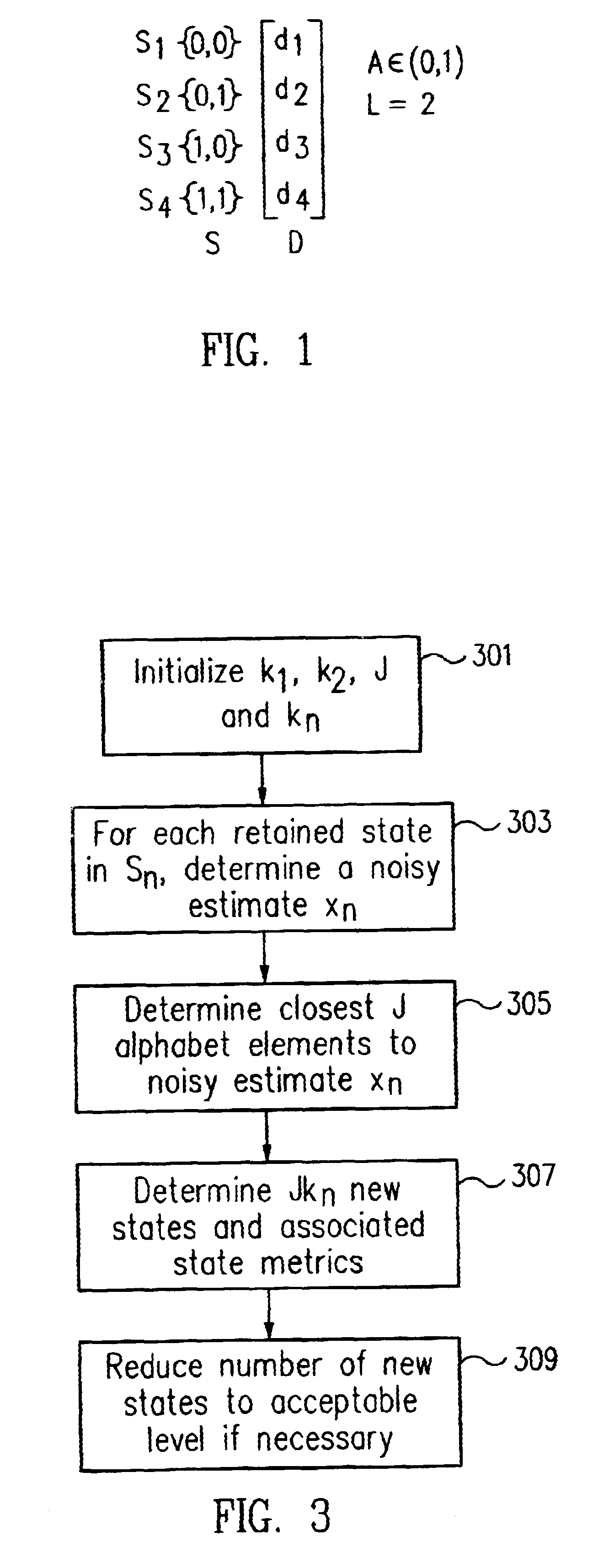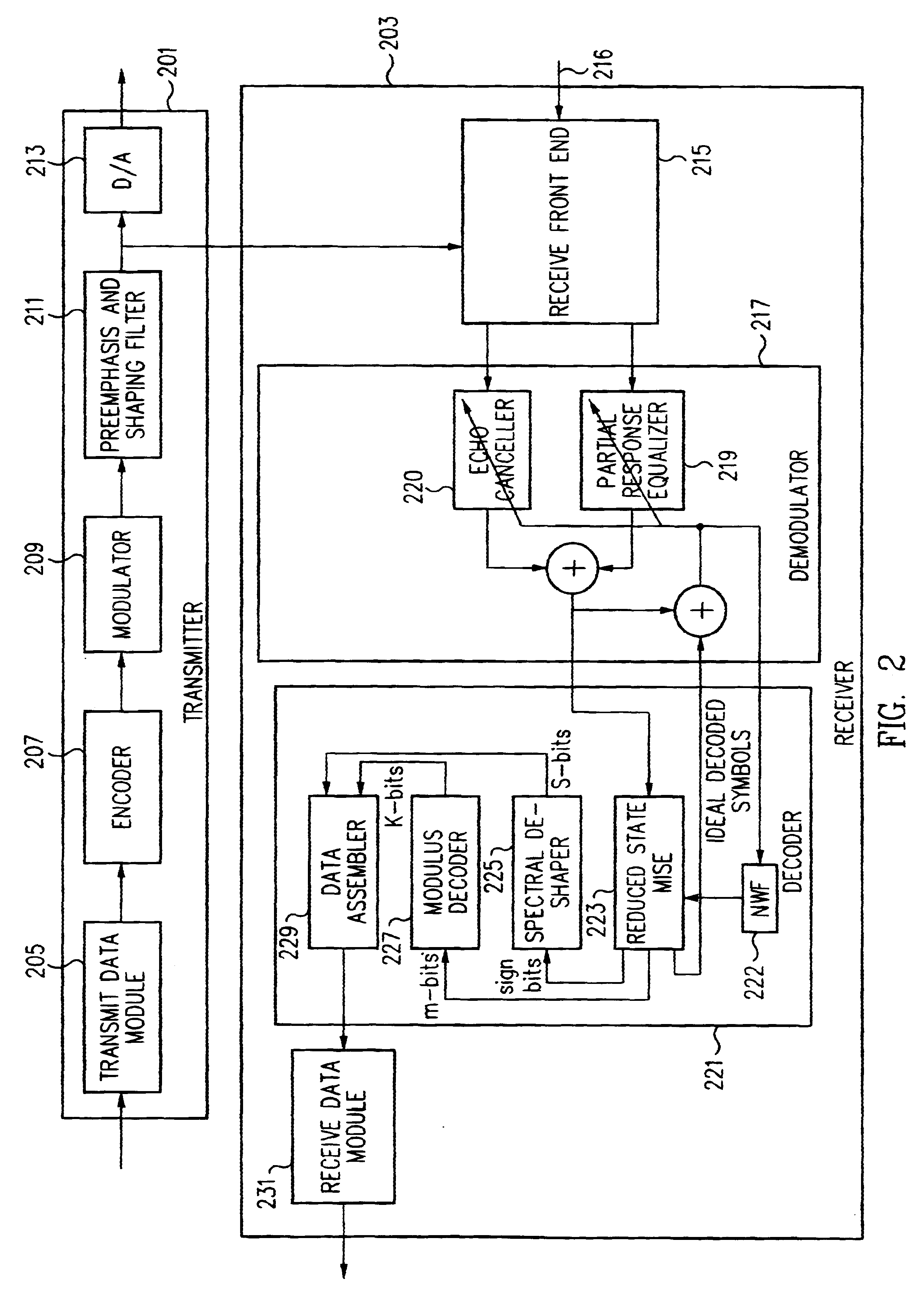Efficient reduced state maximum likelihood sequence estimator
a sequence estimator and state maximum likelihood technology, applied in the field of data communication, can solve the problems of increasing the complexity of the implementation of a viterbi detector, the inability to decode future symbols correctly, and the potentially prohibitive complexity of the viterbi algorithm
- Summary
- Abstract
- Description
- Claims
- Application Information
AI Technical Summary
Problems solved by technology
Method used
Image
Examples
Embodiment Construction
)
The current invention provides an approach which addresses the issue of computational complexity of the Viterbi algorithm by offering an efficient approach which, while being suboptimal, causes only a slight degradation of performance relative to an implementation of a full state Viterbi decoder. That allows the use of improved equalization techniques.
As discussed above, when the channel has severe attenuation at a wider range of frequencies adjacent to DC and 4000 Hz, the noise enhancement caused by the use of a PRIV equalizer becomes intolerable. One approach to battle this noise enhancement is to use Partial Response class V (PRV) equalizer. PRV FE output contains the second difference of symbols spaced by two symbol intervals, and can be expressed as:
y.sub.n =x.sub.n -2x.sub.n-2 +x.sub.n-4
The PRV equalizer has double nulls at DC and 4000 Hz and thus produces much less noise enhancement for channels with high attenuation at band edges. PRV equalizers were never considered practi...
PUM
 Login to View More
Login to View More Abstract
Description
Claims
Application Information
 Login to View More
Login to View More - R&D
- Intellectual Property
- Life Sciences
- Materials
- Tech Scout
- Unparalleled Data Quality
- Higher Quality Content
- 60% Fewer Hallucinations
Browse by: Latest US Patents, China's latest patents, Technical Efficacy Thesaurus, Application Domain, Technology Topic, Popular Technical Reports.
© 2025 PatSnap. All rights reserved.Legal|Privacy policy|Modern Slavery Act Transparency Statement|Sitemap|About US| Contact US: help@patsnap.com



